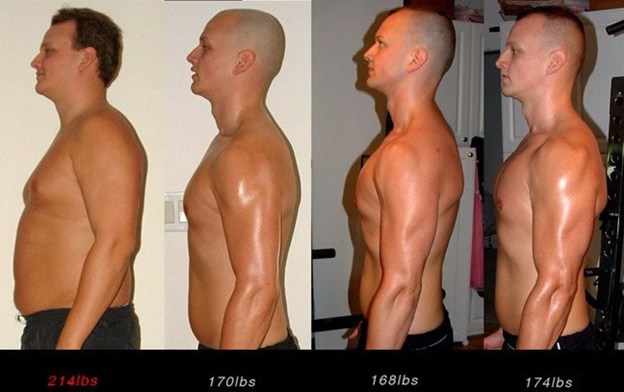Peptides For Muscle Growth Before And After

The use of peptides for muscle growth has become a hot topic in fitness and bodybuilding circles. Fueled by anecdotal evidence and online testimonials, many individuals are turning to these substances hoping for enhanced results. However, the scientific community remains cautious, emphasizing the need for more rigorous research to fully understand their efficacy and safety.
This article examines the current state of knowledge surrounding peptides for muscle growth, exploring the before-and-after claims, the available scientific evidence, and the potential risks involved. It aims to provide a balanced perspective, separating hype from reality.
What are Peptides and How Do They Supposedly Work?
Peptides are short chains of amino acids, the building blocks of proteins. Some peptides are naturally produced in the body and play crucial roles in various physiological processes, including hormone regulation and tissue repair.
The peptides marketed for muscle growth are often synthetic versions designed to mimic or stimulate the body's natural growth hormone (GH) production or its effects. These are typically marketed as Growth Hormone Releasing Hormones (GHRHs) or Growth Hormone Releasing Peptides (GHRPs).
Advocates suggest that these peptides can lead to increased muscle mass, reduced body fat, improved recovery from exercise, and enhanced overall athletic performance. However, these claims are not always supported by robust scientific evidence.
Before-and-After Claims: Separating Fact from Fiction
The internet is rife with before-and-after photos and testimonials from individuals claiming dramatic results from peptide use. These accounts often depict significant gains in muscle mass and reductions in body fat, attributing these changes directly to the peptides.
It is crucial to approach these claims with skepticism. Many factors can influence muscle growth and body composition, including diet, exercise, genetics, and lifestyle choices. Attributing these changes solely to peptides is often an oversimplification.
Furthermore, some individuals may be using other performance-enhancing substances concurrently, making it difficult to isolate the effects of peptides. The lack of controlled studies and verifiable data in many of these testimonials raises serious concerns about their reliability.
The Scientific Evidence: What Does the Research Say?
While some preliminary studies have shown that certain peptides can stimulate growth hormone release, the evidence supporting their effectiveness for muscle growth is limited and often inconclusive.
Many studies are small, short-term, and conducted on animals, making it difficult to extrapolate the results to humans. Furthermore, the specific types and dosages of peptides used in these studies vary widely, making it challenging to draw definitive conclusions.
A 2010 review published in the journal Growth Hormone & IGF Research concluded that while GHRHs and GHRPs can stimulate GH secretion, their long-term effects on muscle mass and body composition remain unclear and require further investigation. The review highlights the need for well-designed, controlled clinical trials to assess the true potential and safety of these compounds.
Potential Risks and Side Effects
The use of peptides is not without potential risks. Because they are often obtained from unregulated sources, the purity and quality of these products can be questionable.
Reported side effects of peptide use include injection site reactions, such as pain, redness, and swelling. Some individuals have also experienced increased appetite, fatigue, and water retention.
More serious potential risks include hormonal imbalances, which can lead to a range of adverse health effects. Furthermore, the long-term effects of peptide use are largely unknown, raising concerns about potential long-term health consequences. It is crucial to consult with a qualified healthcare professional before considering peptide use.
Regulatory Status and Ethical Considerations
The regulatory status of peptides varies depending on the country and the specific peptide in question. In many countries, they are not approved for use in humans for muscle growth and are only available for research purposes.
The use of unregulated peptides raises ethical concerns, particularly in competitive sports. Many sports organizations prohibit the use of these substances, and athletes who use them risk disqualification and damage to their reputation.
Furthermore, the promotion and sale of peptides for muscle growth often relies on misleading claims and unsubstantiated promises. This can be harmful to individuals who are vulnerable to these marketing tactics, especially those who are struggling with body image issues.
The Human Element
John, a 32-year-old fitness enthusiast, shared his experience: "I was tempted by the promises of rapid muscle growth. After doing some research, I realized that the potential risks outweighed any possible benefits. I decided to focus on optimizing my diet and training instead, and I've seen great progress without resorting to unproven substances." This highlights the importance of prioritizing safe and sustainable methods for achieving fitness goals.
Conclusion: Proceed with Caution
While the idea of using peptides for muscle growth may seem appealing, it is essential to approach this topic with caution. The scientific evidence supporting their effectiveness is limited, and the potential risks are significant.
Individuals considering peptide use should consult with a qualified healthcare professional to discuss the potential risks and benefits. They should also be wary of exaggerated claims and unregulated sources.
Ultimately, a healthy diet, consistent exercise, and adequate rest remain the cornerstones of muscle growth and overall well-being. There are no shortcuts to achieving sustainable results.


















